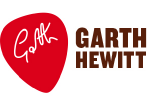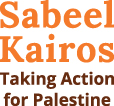Lines of people, mainly children, waiting in line for water in the Al Rimal neighbourhood of western Gaza — 5th May 2025. Photograph: Ahmed Dader
— — — — — — —
Gaza Appeal update
May 2025
Since the 2nd March 2025, Israel has enforced a comprehensive blockade on Gaza, prohibiting the entry of all humanitarian aid, including fuel.
Numerous aid organisations have warned that they are running out of supplies and their operations may cease imminently. On 7th May, World Central Kitchen said it “no longer has the supplies to cook meals or bake bread in Gaza.” The Palestinian Prime Minister, Dr. Mohammad Mustafa, declared Gaza a “famine zone” and UNICEF warns that children in Gaza are facing a growing risk of starvation, illness and death.
Over 75% of households in Gaza reported a decline in water access over the past month amid deteriorating sanitation conditions, with Gaza’s medical rehabilitation system at breaking point.
Palestinian Red Crescent reported that less than half of its emergency vehicles are operational due to a lack of fuel. OCHA reports that ambulance services are shrinking, with only 48 functioning vehicles compared to 149 before the ceasefire collapsed.
While hundreds of truckloads with life-saving supplies are waiting to enter Gaza, children, who make up about half of Gaza’s population, are facing the worst humanitarian crisis since October 2023, characterised by the growing risk of starvation, illness and death due to ongoing bombardments, forced displacement and the aid blockade.
Over 75% of households in Gaza reported a decline in water access over the past month amid deteriorating sanitation conditions, with Gaza’s medical rehabilitation system at breaking point.
The Ministry of Health reported on 8th May that 2,545 people have been killed and 6,856 injured in Gaza since Israel resumed hostilities on 18th March. This brings the total number of Palestinians killed since 7th October to 52,653 and 118,897 injured. Thousands more are missing, presumed dead. Many believe these to be conservative assessments of the actual loss of life.
On the 5th May, Israel’s security cabinet approved a plan to expand military operations in the Gaza Strip, which, according to officials, will entail the movement of most of the population to the southern part of the Strip, and that Israel’s military will remain in control of Gaza.
Israeli officials also released details of a plan to dismantle the existing aid distribution system run by the United Nations and its humanitarian partners. The US-Israeli joint plan is to replace the 400 food distribution sites administered across Gaza by the UN with four sites administered by the newly formed Gaza Humanitarian Foundation, with the Israel Military (IOF) responsible for security. The hubs would provide aid to 1.2 million people (60% of the population) and would only be in areas designated by Israel (Rafah).
Aid agencies, including five UN entities and over 200 non-governmental organisations, have rejected the plans, saying it will “weaponise” aid, worsen displacement and advance Israel’s military plans to coerce Palestinians to move from north to south Gaza, with eventual plans for the ‘voluntary’ migration of Palestinians out of Gaza.
Amos’ partners in Gaza
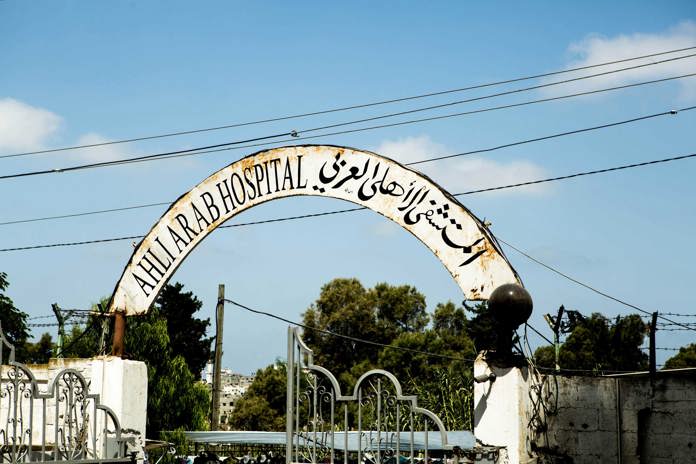
A Place of Peace: Al Ahli Arab Hospital in Gaza City
— — — — — — —
On 13th April, the IOF launched an attack on our partner, Al Ahli Hospital in Gaza City. They gave a 20-minute warning to take patients outside (including intensive care patients) before two missiles hit the hospital. This was another devastating blow to healthcare in Gaza, which has been systematically attacked by Israel during the conflict in clear breach of international law.
Initial estimates place the cost of repairing damage to the emergency department building, genetic department and pharmacy buildings as being over $3 million. There was also wide-scale further damage, which meant the hospital had to close, although it has now reopened.
Before Al Ahli was attacked there were 80-100 inpatients, and each day:
- 250 trauma injury treatments
- 23 surgeries (for often complex injuries)
- 120 injury dressings (including acute injuries)
- 50 CT scans (Al Ahli had the only functioning scanner in the northern half of Gaza)
- 200 x-rays
- 32 ultrasounds
- 85 physiotherapy sessions
Al Ahli is now operating at about 40% of its capacity. The diagnostic centre and the children’s rehab department have reopened, and the chemo centre has partially reopened. Each day they are now seeing:
- 50 inpatients
- 4-5 operations for vascular and orthopaedic cases
- 60 wound dressings
- 20 CT scans
There are also major shortages in medical supplies, fuel and food.
Shortly before the attack, we had sent through funds to assist them in reopening their physiotherapy unit, but fortunately the work was delayed due to problems sourcing materials. We will continue to work with the Diocese of Jerusalem to support the hospital and will send through supplies and other essential requirements as soon as possible.
Food and water supplies
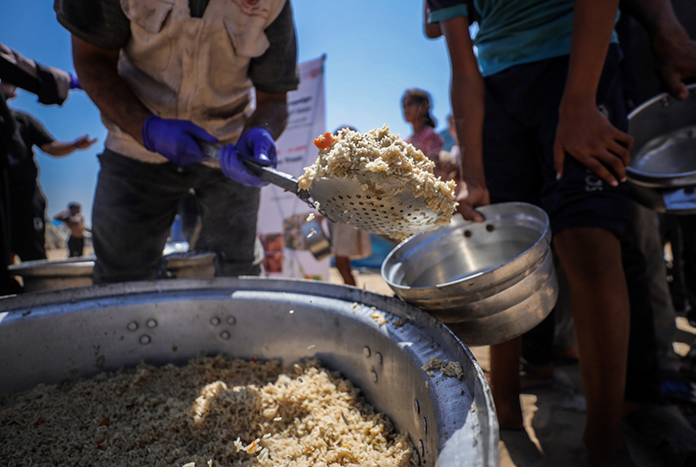
Distribution: Food being cooked in Gaza to be delivered by MA’AN Development — September 2024
— — — — — — —
We are working with three partners in Gaza to deliver food aid: MA’AN Development, Welfare Association (and their local partners) and the Gaza Sunbirds. We respond quickly to our partners’ requests, especially when they can source food and water but do not have the funds or the supplies available from other larger organisations.
Between 20th and 28th April, MA’AN Development completed the distribution of 4,841 hot meals in Gaza City for 3,893 families (19,016 people). They are due to distribute 684 cubic metres of water in May, which they have successfully sourced.
The Welfare Association’s local partners, Al Ard for Agricultural Development, have close ties to local farmers. We have entered into a joint project with the Welfare Association to support Al Ard in securing 5,000 hot meals for 20,000 people and 440 cubic meters of drinking water over the coming weeks.
Between 20th and 28th April, MA’AN Development completed the distribution of 4,841 hot meals in Gaza City for 3,893 families (19,016 people).
During the ceasefire, the Gaza Sunbirds created their own food truck by converting an old van to run pizza parties and to distribute food aid. They were able to carry out extensive runs with World Central Kitchen providing hot meals and food parcels until supplies ran out. They are now organising events (such as a table tennis competition) and providing individual support to provide as much assistance as possible.
These are drops in the ocean. Integrated Food Security Phase Classification (IPC) reported that about 1.95 million people, or 93% of Gaza’s population, are living with acute food shortages. Among them, 244,000 people, or 12% of the population, are experiencing the most severe, or “catastrophic,” shortages.
DSPR
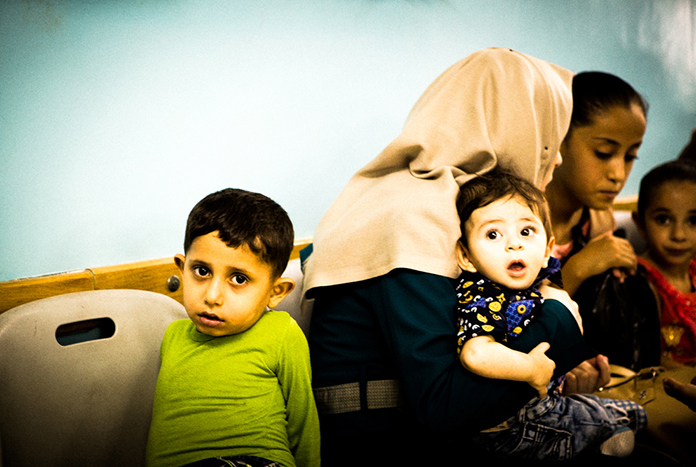
Trauma: Young children attending DSPR’s health clinic in Gaza City — June 2016
— — — — — — —
DSPR have had to suspend much of their psychosocial trauma support work with children. During the ceasefire, they geared up their services so that they could start to address children’s trauma and not just provide temporary relief or de-escalation. They used the undamaged parts of two of their buildings in Gaza City to run family clinics and resume trauma work. They reopened their centre in Rafah (in the southern tip of Gaza), which was undamaged, and ramped up the services in their Nosierat Clinic — a converted wedding venue in central Gaza.
Once the fighting resumed and Gaza City came under attack, it became unsafe to run the clinics because there was a fear that Israel was targeting groups of people meeting together in buildings. They moved the management to the Al Ahli Hospital; however, after it was attacked, they had to leave. They also had to empty their Rafah clinic of equipment and close it down as Israel was advancing.
Once the fighting resumed and Gaza City came under attack, it became unsafe to run the clinics because there was a fear that Israel was targeting groups of people meeting together in buildings.
They are not clear if anything still remains of the centre. The Nosierat clinic continues to operate; however, with the removal of safe zones, people are nervous about too many people coming together at one time and so the numbers using it are reduced.
The staff team, like everyone in Gaza, are feeling angry, hungry, scared of what the future may hold and failed by the international community. It’s very hard to run trauma work when this is your daily experience.
We Are Not Numbers:
The Writers and Tent Education Project
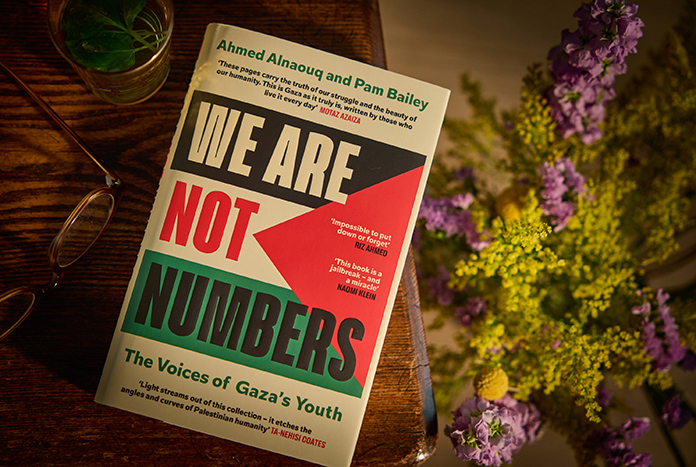
We Are Not Numbers: The Voices of Gaza’s Youth by Ahmed Alnaouq and Pam Bailey
— — — — — — —
We Are Not Numbers (WANN) continues to send money to their writers in Gaza to support them in chronicling the genocide. Before the war, they did not pay for articles. However, they have seen this as a vital, dignified way to support writers. The cost of getting hold of cash in Gaza is about 30%, and with inflation shooting up, they have had to increase the payments.
On 23rd April, ‘We Are Not Numbers: The Voices of Gaza’s Youth’, a book by Ahmed Alnaouq and Pam Bailey, was released chronicling the first 10 years of We Are Not Numbers. It immediately became a bestseller.
“In the past year, I have lost many of the tangible parts of my memories — the people and places and things that helped me remember. Every destroyed house becomes a kind of album, filled not with photos but with real people, the dead pressed between its pages.” Mosab Abu Toha
One of the writers featured in the book, and an early WANN writer, is the Gaza poet Mosab Abu Toha. On 5th May, he was awarded the Pulitzer Prize for Commentary. He received the honour for a series of essays published in The New Yorker, which were written during the Israeli military offensive that began in October 2023. He dedicated the award to teachers and students in Gaza, as well as to the 31 members of his family who were killed in an Israeli airstrike that year.
In one of these essays, Mosab wrote: “In the past year, I have lost many of the tangible parts of my memories — the people and places and things that helped me remember. Every destroyed house becomes a kind of album, filled not with photos but with real people, the dead pressed between its pages.”
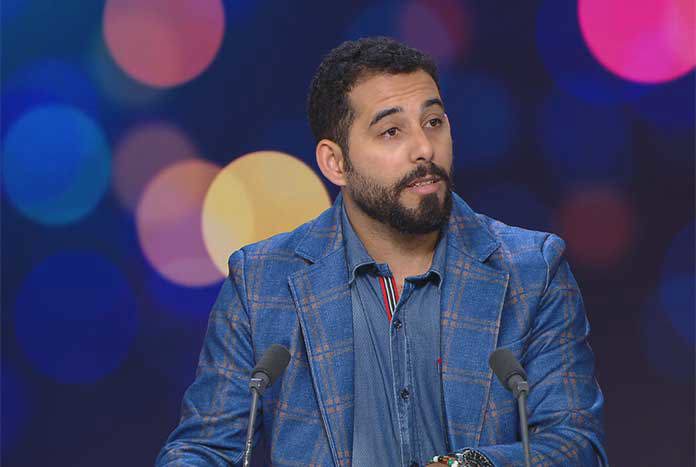
Honour: Mosab Abu Toha was awarded the Pulitzer Prize for Commentary for his essays published in The New Yorker
— — — — — — —
In addition, we have been working with WANN to support a Tent School Project in the Masawi area of central Gaza. Children in Gaza have been out of school since 7th October 2023, so they decided to provide primary education. We currently support six teachers who work across three tents (one on a double shift) for 128 children. The plan is to increase this by adding a fourth tent, as the demand is so great.
On 1st April, Global Education Cluster reported that 95.2% of schools in Gaza have been damaged and 88.5% of school buildings will require complete reconstruction or major rehabilitation.
Doing more Hope
Amos Trust will continue to provide as much support as possible to partners and colleagues in Gaza. The situation is desperate, but we believe that ‘doing hope’ means persevering when things appear bleak and continuing to support the people who live out that hope every day.
Amos is not an aid organisation, yet how can we not respond to the desperate need presented to us? We stand in solidarity with the people of Gaza to demand an end to the war and the start of a new future free from fear, with the rights and opportunities we take for granted.
Please donate to our Gaza appeal now.












